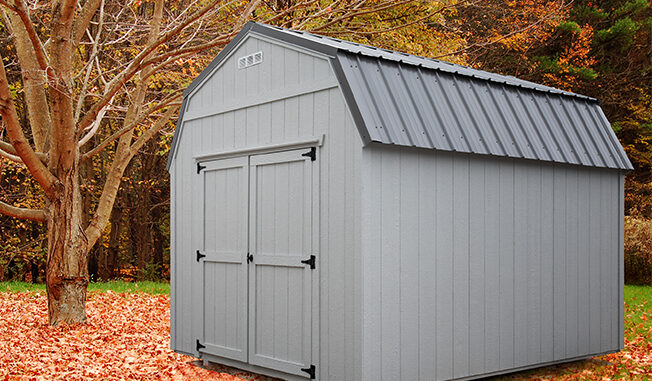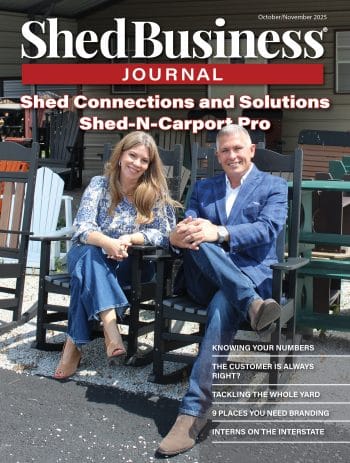
Backyard features are among the most important factors for homeowners as they increasingly look to this space to entertain, relax, and simply spend more time outside. In turn, it comes as no surprise that exterior home improvement projects reap some of the highest returns on investment—commonly with siding, patios, and decks.
However, in a time where the she-shed movement is inspiring backyard bars, garden oases, and getaways, we are seeing consumers consider outdoor structures more and more as their next home improvement project.
According to RemodelingCosts.org, sheds offer an average return on investment of 50 to 80 percent, with this skyrocketing with more elaborate structures. I recently spoke with James Paquette, chief financial officer and founding partner of Heritage Building Co., to learn more about how shifting consumer behavior is driving the demand of alternate-use sheds and how businesses can ensure they adapt to these changes.
RAISING EXPECTATIONS
“Consumers are moving away from the old shed mentality,” says Paquette. “They are now not just treating sheds simply as storage units, but as alternate-use spaces.
“Over the last one to two years, we’ve seen a jump in the level of quality homeowners demand from sheds as a result of this. Now, I often hear consumers are turning to shed additions to drive value for their homes.”
This new consumer mindset has brought an increased attentiveness to the quality of materials and craftsmanship used to build sheds. As homeowners are now treating sheds as functional spaces, they are looking for the same durable products they trust to be used on their houses.
BUILDING LIKE A HOME
In addition to durability, Paquette says consumers are translating their personal home design styles to their sheds through the use of matching siding materials and colors to create one cohesive outdoor property.
With this, companies are offering sheds that reflect trending styles (such as the modern farmhouse) with innovative products to achieve homeowner goals. Dealers are finding consumers want the same features for their sheds that are offered for homes, such as energy-saving structural materials to keep them cool in the warmer months and weather-resistant siding to keep their structure looking new for longer.
“We use LP Building Solutions products because we see the value in how its durable residential materials have been customized for the shed industry,” says Paquette. “LP® Outdoor Building Solutions® offers the same durability and design flexibility as its LP® SmartSide® portfolio that is used on residential builds. We see heightened interest in our units when we leverage that they are built with the same products as homes.”
ANSWERING DEMANDS
Paquette says there is an opportunity for shed manufacturers to capitalize on this shift in consumer demand to grow their business. Finding the right products is the first step to offering sheds that will address evolving preferences.
Just like a home, the value of a shed is dependent on the materials used to build it, and this is directly reflected in the return on investment.
While consumers are increasingly pursuing premium backyard sheds as their next home improvement project, it is important to keep up with the latest stats on ROI and offer a variety of durable, versatile options that will help you close the sale.





Pingback: Selling Sheds as a Homeowner’s Next Home Improvement Project – Spacey